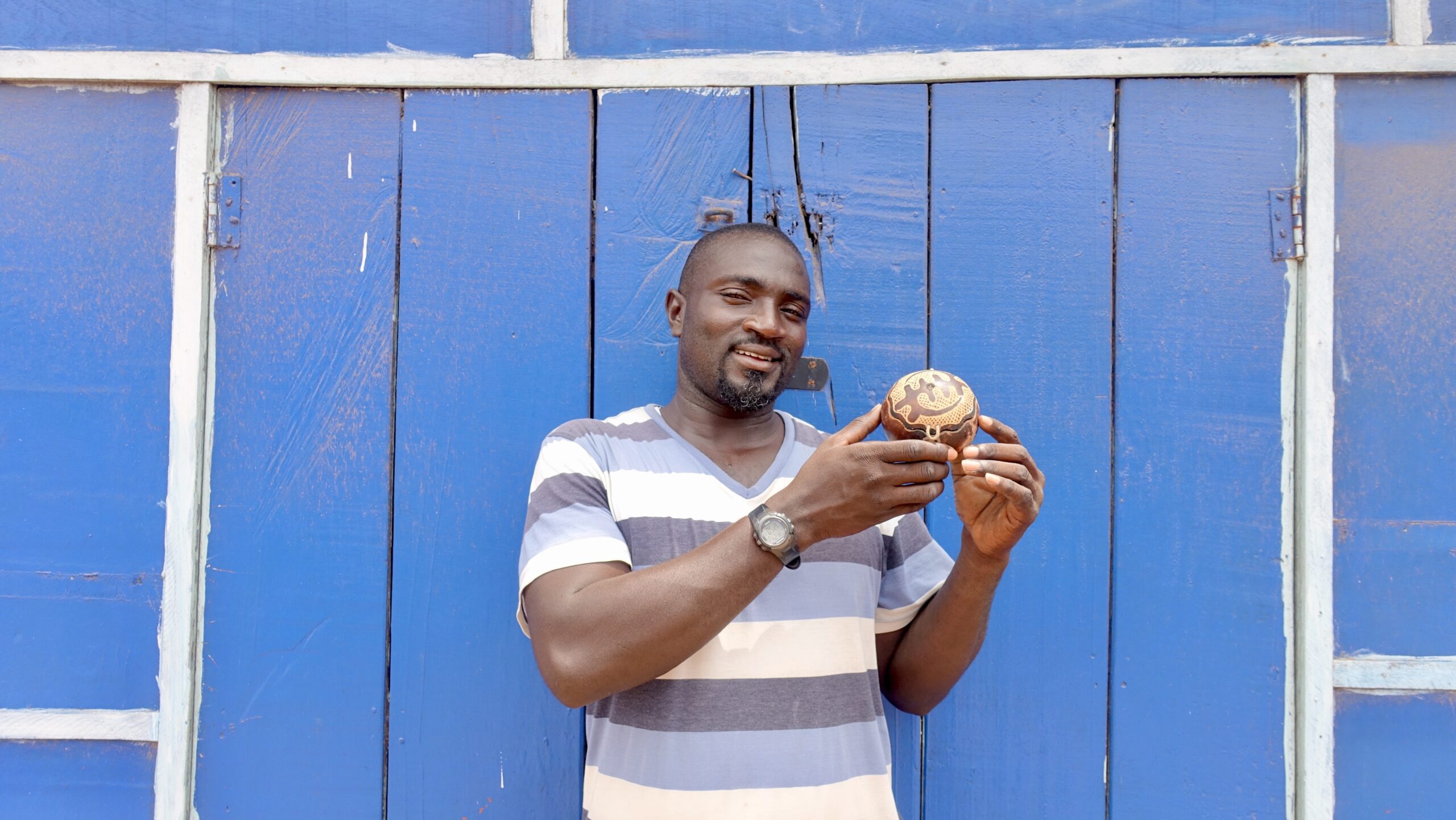A calabash (also called bottle gourd and formally as Lagenaria siceraria) is a fairly large fruit grown on trees found in parts of Africa, Central and South America, the West Indies and extreme southern Florida. When it is dried out and hollowed out, it can be used for many things.

Calabash growing on tree

Dried out calabash
In Africa people use them to create different musical instruments such as maracas or drums, as food and liquid containers (some eating places use it as a tool to attract tourists by serving them native recipes in calabashes) or simply as a decorative piece. The plain look of the calabash, can be changed into any sophisticated piece of art, such as Ibrahim does for Africana skincare.

Calabash maracas

Calabash drum

Decorative calabash
For our packaging we use different types of cover design. All handmade by local Ghanaian craftsmen, the difference being the material used and the technique in making it:
- Elephant grass by Tahiru
- Raffia by Ike
- Full calabash by Rascharles
Introducing our artist Ibrahim
Ibrahim has been born and raised in Accra, Ghana and can speak three different languages; Hausa, Ga and English.
Craftsmanship lies in his families blood. He learned this craft mainly from his uncle ten years ago, and perfected it through his dad. Today he owns a little shop were he sells all kinds of African art made from wood, calabash and bone, all natural resources that can be easily found within the African natural environment. Although he dedicates himself to what he loves, he still dreams of owning a big farm one day.
The main motivation to his work is not exactly money, but the joy that is transmitted to him and the smile he sees on a persons face when they hold one of his pieces of art in their hands.


Process behind making the calabash packaging
Ibrahim obtains a full dried out calabash which he then cuts in half. He then starts to cut into a wave like shape, each side of the calabash using a knife. Once this is done, he uses sand paper to sand the cutting he made on the calabash. He then proceeds by using a special machine to smooth out the edges and make sure both sides of the calabash fit in together properly. He finally goes onto the final touches which are the colouring and polishing of the container.

Full calabash before cutting

Shape with first knife cut

Final shape after using machine to smoothen the edges
If you would like to get to know Ibrahim better, watch our English subtitled interview below were he speaks about himself, his job and his working technique.


Leave A Comment